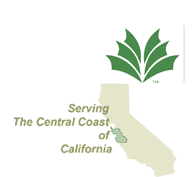2009 SOD Science Symposium
Matteo Garbelotto
UC Berkley, Berkley, CA
Spore spread:
- Pathogen moves freely 0-600 ft. in most areas
- Windy conditions contribute to broader spread: ¾-3 miles spore dispersal
- All infestations originated from Sonoma and Santa Cruz counties
- Mt. Tamalpais/Santa Cruz-base of infestation source
- NA1 mating type (least virulent)-here now
- NA2 coming, has been found in CA nurseries
- Despite control efforts, cannot be fully eliminated from infected nurseries
Study 2001-2008:
- Disease spreading rapidly from forested areas, not cities or nurseries suggesting wind and streams may be primary dispersal mechanisms
Katy
Washington
- All three genotypes observed in Washington
- Discovered in nurseries in 2003-05 nurseries tested positive, mostly on Rhododendren and Camellia plants
- Strong movement of pathogen detected in 2003
- Nuclear testing of pathogen spores indicate P. ramorum may be over 4.5 million years old
Ross K. Meentemeyer
Department of Geography and Earth Sciences, University of North Carolina, NC
Pathogen spread risk predictions 2016-2030:
- By 2016 pathogen is expected to be rapidly infecting trees in the north coast areas
- The north coast is where most disease spread will occur
- Climate influenced

